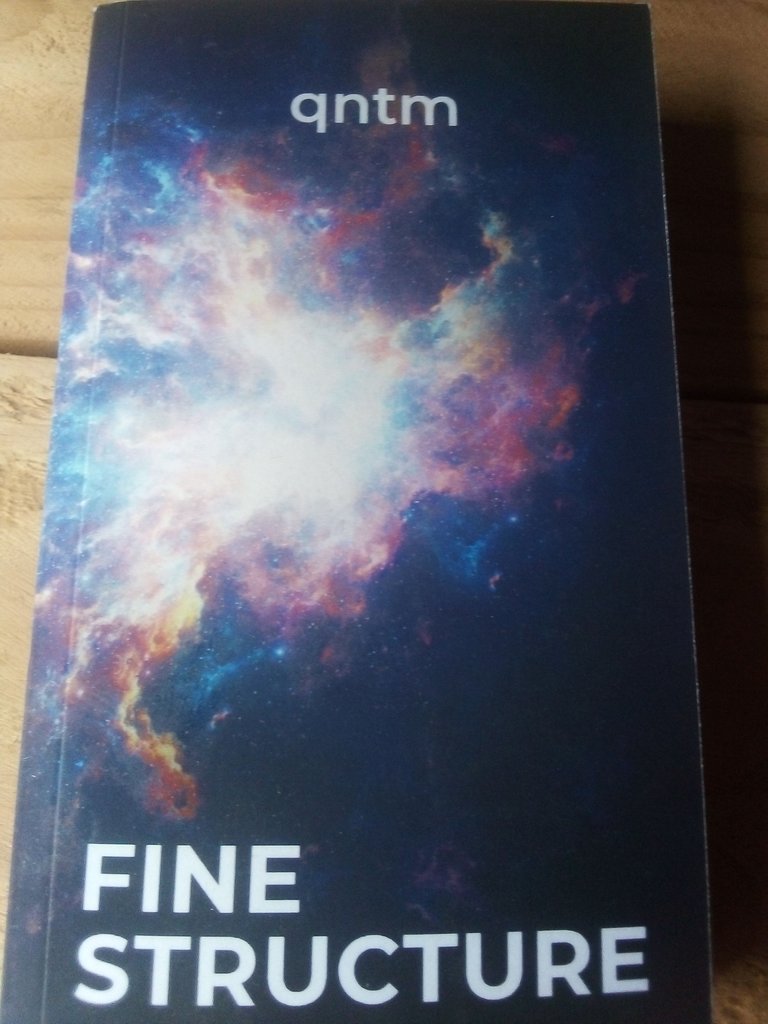
Good day Hivers and Book Clubbers,
Let's talk some more about books. In this review, I dip my toe into the fictional side of things again. The book I'm reviewing is titled 'Fine Structure' by QNTM. Written in parts and released on the Internet between 2006 and 2010, it also came out as a paperback in 2021, which I got a while ago. The story amounts to about 380 pages, though the page size is quite small, so light readers shouldn't be daunted by it. I'll be talking more about the author and his style in particular, and not too much about the plot itself, but still, consider this your SPOILER ALERT.
What's up with the name?
QNTM (pronounced Quantum, according to Wikipedia) obviously is a pen-name. The real name of the author is Sam Hughes, who is British. Not much is known about him, but he has several full-length science-fiction novels who are widely available.
I own four of them, and have read all of them with interest and attention. Maybe I'll do a review on them in the future. For now, I want to talk about his style of writing, which is quite unique.
Writing style and techniques
For one, QNTM always starts close to home. For a SF-writer, his starting position is always Earth itself, and it is always close to the current year (as of writing). From there, he builds towards the future in the story, as is the case with Fine Structure specifically.
What can be SF about the current Earth? Not much, but this is where he adds the SF-layer. This is often done by finding some unexpected power or breakthrough discovery. In Fine Structure, one person on Earth gets superpowers every year. The next year, the person receiving superpowers is twice as strong as in the year preceding it. Which means one person a year is getting progressively stronger up to the point of ridicule.
Which leads to the second point I want to mention about QNTMs writing style: he isn't afraid to leave the reader in the dark for a while. There is no central plot per se, no clear goal for a protagonist to work towards. In fact, I was struggling with figuring out who the protagonist WAS in this story.
So there is no clear central plot, and many different viewpoints and angles, and there are serious gaps in the reader's knowledge for significant parts of the story. And yet he is able to weave it together in a remarkable way. For example, one of the main characters drops out of the story -no mention of him- for 200 pages, which is resolved in a creative way in the conclusion of the story. A great 'a-ha' moment for the reader, though some readers might have forgotten who he was at that point.
There is a lot of jargon used from physics, chemistry etc. which can be hard to read through; I'm not very familiar with those subjects, so I tended to read past it instead of getting bogged down. Because of this, I can't tell you if his theories and explanations make any sense on a 'real' level, though I'm not one for grading SF-novels based on how 'realistic' they are.
Conclusion
You should read this book. I'm not kidding. I bought it off of Amazon, so it should be quite widely available in many countries, and also off of QNTM's own website. I've tried not to mention too much of the plot: I want potential readers to discover it for themselves. This one is worth checking, is all I can say. I'll probably be back with non-fiction books in the future, though there are some uread SF-novels on my shelves which beg to be read. I'll see you all next time,
-Pieter Nijmeijer
(Top image; self-made photo of book cover)
Congratulations @pieternijmeijer! You have completed the following achievement on the Hive blockchain And have been rewarded with New badge(s)
Your next target is to reach 14000 upvotes.
You can view your badges on your board and compare yourself to others in the Ranking
If you no longer want to receive notifications, reply to this comment with the word
STOP